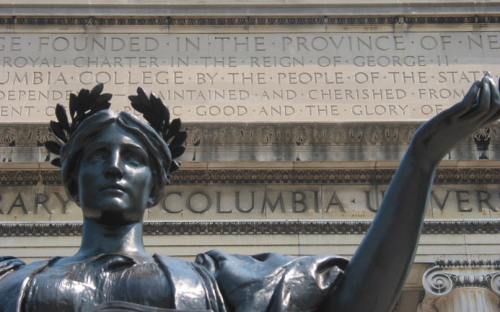From a White House summit, more than 40 top US business schools including Stanford, Yale and Babson College on Wednesday pledged to increase opportunities for women in business.
Attended by the deans of dozens of the world’s highest ranking schools, the summit saw policy makers and academics sign off on a set of best industry practices to help women succeed throughout school and their careers.
A White House fact sheet released on Wednesday showed four key focus areas: Ensuring access to business schools and business careers; building a business school experience that prepares students for the future workforce; ensuring career services that go beyond the needs of traditional students; exemplifying how organizations should be run.
Additionally, several schools have announced specific, tangible actions to make further progress on these diversity goals.
Glenn Hubbard, Dean of Columbia Business School, said: “Creating an even playing field will require work in every stage of a prospective businesswoman’s career, and business schools are uniquely situated to effect change.”
The White House summit marks the latest push by schools to improve and promote women in business.
Global schools have developed specific women’s leadership programs, including GWU School of Business of the US, and ESADE Business School and Oxford University’s Saïd Business School in Europe.
The business schools will be held accountable for the agreed practices through internal assessments in addition monitoring by AACSB, the accreditation body.
Christine Clements, AACSB chief diversity and inclusion advocate, said schools need to address the life-cycle challenges that women face. “The industry as a whole must meet the needs of the non-traditional student [and] create an equitable workforce,” she said.
A Council of Economic Advisers report also published on Wednesday found that undergraduate women are currently 30% less likely than men to major in business. And within five years of graduation from an MBA, males earn 30% more than women MBA holders, rising to 60% over a decade.
“There’s a lot more work to be done,” said Sally Blount, dean of Kellogg School of Management.
Yet some, such as Lancaster University Management School in the UK, Berkeley’s Haas School in the US and Nanyang Business School in Singapore have hit or are approaching gender parity.
Just 5% of Fortune 500 CEOs last year were women, and women held only 17% of board seats at those firms.
Yet research has shown that greater diversity in the workforce increases productivity, improves decision making, and heightens performance.
“Fewer than 3% of venture-backed companies have a woman as their CEO, and yet we see again and again that companies with diverse leadership often outperform those who don’t,” said White House senior adviser Valerie Jarrett on a conference call with journalists.
Douglas Shackelford, dean of the North Carolina’s Kenan-Flagler Business School, said: “We’re eager to partner with the business community as it changes to offer more flexibility and better embrace diversity.”
In working together with the heads of leading business schools, policy makers have signalled they believe business education is key to improving corporate diversity.
“Drawing more women into the pipelines of business schools can change our companies and get more women into higher levels in our firms,” said Joyce Russell, vice dean of University of Maryland’s Smith School of Business.
“Working together, we will deliver results,” she added.
The White House event on Wednesday followed the announcement by President Barack Obama of a tranche of initiatives to support women.
Dozens of companies made pledges to increase the numbers of women in entrepreneurship. More than 40 venture capital firms representing over $100 billion in assets under management pledged to lead initiatives that encourage women to pursue entrepreneurial ventures.
RECAPTHA :
71
6c
aa
e8








